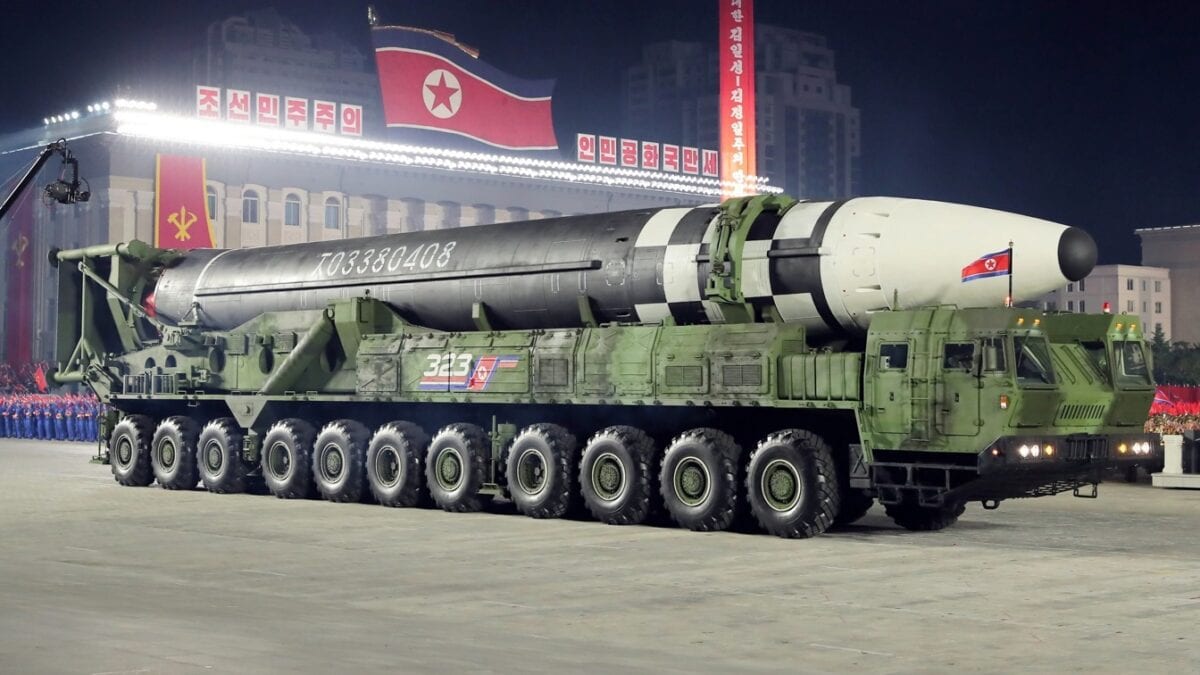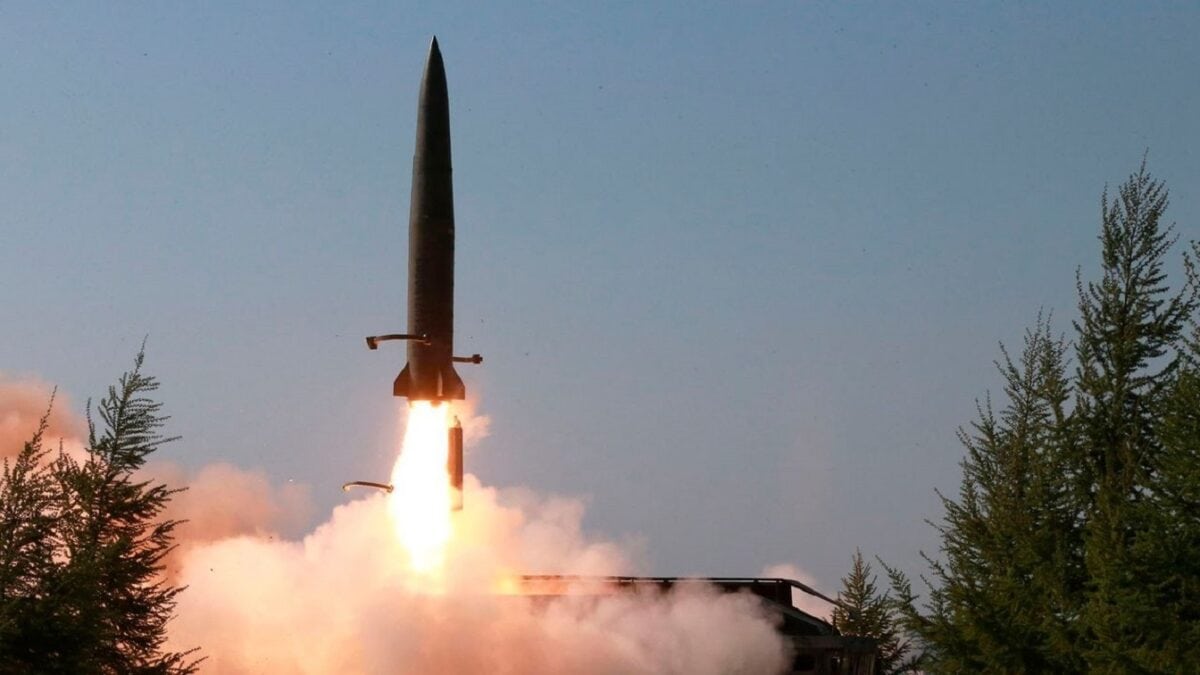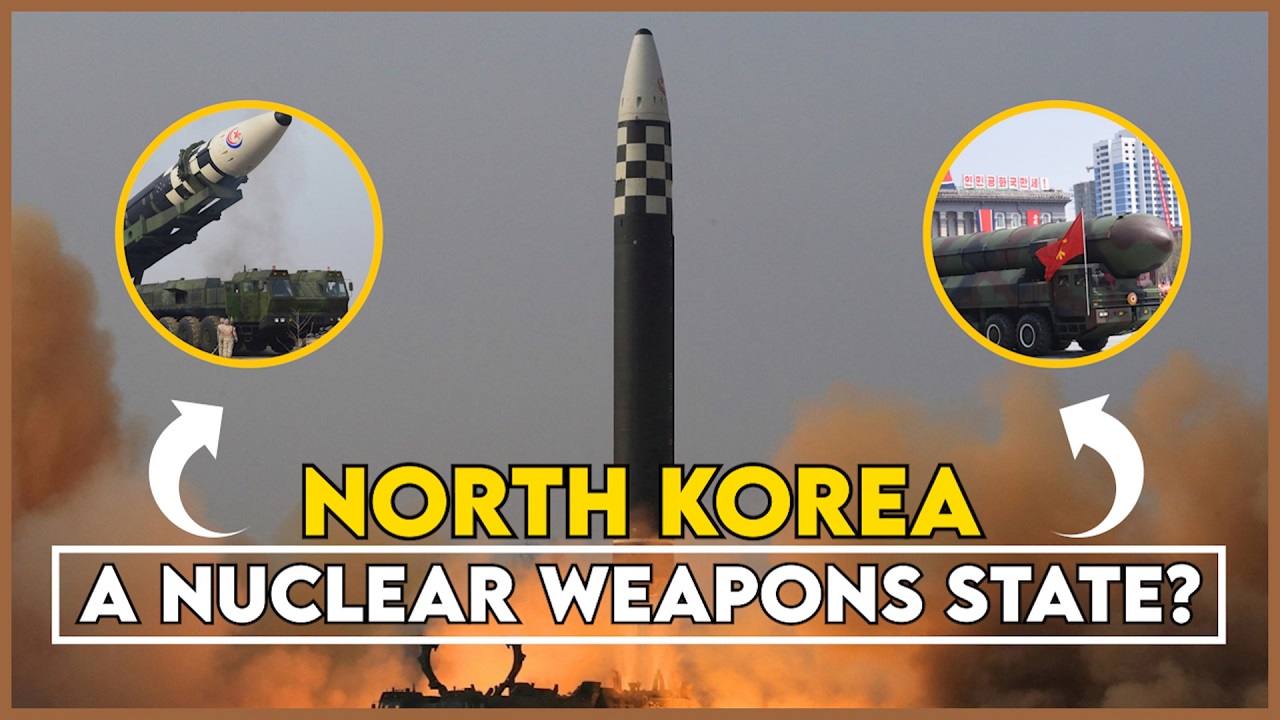U.S. and South Korean intelligence have hinted for a while this year that North Korea would test a nuclear weapon. Speculation is rising in the wake of the North’s many recent missile tests. North Korea has conducted six nuclear tests to date. It has not tested a warhead since 2017. At that point, North Korean supreme leader Kim Jong Un halted testing to facilitate diplomacy with U.S. President Donald Trump and South Korean President Moon Jae-In.
Those negotiations failed, in part because Kim never offered serious concessions to Trump. North Korea simply does not want to negotiate its nuclear weapons away. The U.S. wants to negotiate but wants the negotiations to include nukes. The North is unwilling and seems to be trying, instead, to coerce the U.S., South Korea, and Japan into accepting it as a nuclear weapons state by testing relentlessly.
The logical next step after all the missile tests and other provocations this year would be a nuclear test. That would be a cap to all these incitements; indeed, their purpose may be to soften the ground for what indeed will be a profoundly disruptive seventh nuclear test.
What to Look for in Another Test Nuclear Test
North Korea’s nuclear arsenal is now fairly established and functional. That is, the outside analyst community is now reasonably confident that North Korea can field basic atomic bombs which will work and whose missile delivery vehicles can survive re-entry. North Korea can strike cities in northeast Asia and, probably, the continental United States. It has crossed the most important technological barriers. It probably has somewhere between thirty and fifty warheads and hundreds of missiles.
Based on the geological disturbances caused by its previous nuclear tests, the North can likely field an atomic bomb ten times more potent than that dropped on Hiroshima in 1945. It is also likely that North Korea is still limited to fission atomic bombs, not fusion or thermonuclear warheads. This basic nuclear technology limits the yield – the amount of energy released by the chain reaction – of a North Korean warhead.
Hence, the most critical question for another North Korean nuclear test is if Pyongyang can make the step up to a fusion weapon. If so, this would dramatically raise the destructive potential of a North Korean nuclear strike on a city. Multiple weapons of this sort used against South Korean or Japanese cities would likely bring a breakdown of social order and even a collapse of the state itself. The pressure for more radical, risky responses to North Korean nukes would rise.
North Korea Nuclear Test: What Do We do?
As in the past, our options in response to a North Korean nuclear test are limited.
We have been unable to deter the previous six tests. We probably cannot stop a seventh if the regime is determined to do it. It is unclear whether any action short of a military strike could prevent this. That, of course, would be hugely risky for exposed South Korean, Japanese, and U.S. cities. The U.S. has not threatened serious force to prevent proliferation since the Cuban Missile Crisis. We are unlikely to do so here. We will learn to live, however grudgingly, with North Korea’s nukes.

North Korean Hwasong-16 ICBM. Image Credit: KCNA/North Korean State Media.
But we will respond, and the response proposals will become more radical as the problem worsens. The more North Korea builds nuclear weapons and missiles, the more relentlessly and recklessly it develops hugely destructive weapons, and the more it incentivizes South Korea and Japan particularly to consider previously unthinkable options. Ideally, we would negotiate a deal with the North which caps its program and includes some verification and inspection. But that is so unlikely that military options will increasingly be discussed.
On a scale of growing peril, I see a fusion test unlocking the following increasingly risky options, mainly if most tests follow, as they likely will:
– A major missile defense build-up: Missile defense, unfortunately, does not work well, and North Korea is aware of its capabilities. But this is better than nothing. South Korean and Japanese cities are naked against a missile strike, and North Korean fusion weapons will reinforce that vulnerability.
– South Korean and/or Japanese nuclearization: This is a live debate now in South Korea. The US opposes it, but 70% of South Koreans support it, and a seventh nuclear test, especially of a fusion weapon, will push that percentage up even higher.

North Korea Ballistic Missile Test. Image Credit: Creative Commons.
– Quarantining North Korean ports: This is a much more aggressive action than the defensive two above. This was U.S. strategy during the Cuban Missile Crisis, an alternative to invading Cuba. If North Korea flatly refuses to stop building hugely destructive weapons, blocking the inflow of parts and material is likely to arise as an option. Sanctions on the North Korean economy are already intended to blow this inflow but are not enforced well by China or Russia.
– Airstrikes on North Korean missile sites in a crisis: South Korea’s current president proposed this as a candidate earlier this year. This is hugely risky. It could ignite the very war it seeks to prevent. But it is a sign of the desperation to which South Korea is being driven.
All of these options are terrible. All represent a major escalation. But North Korea’s adamant refusal to slow down will increasingly prompt debate of more hawkish tactics. And a seventh nuclear test – particularly one with a massive yield from a thermonuclear bomb – will increase the paranoia even further. North Korea – and its sanctions-unenforcing, passive enablers China and Russia – have no one but themselves to blame.
Expert Biography: Dr. Robert E. Kelly (@Robert_E_Kelly; RoberEdwinKelly.com) is a professor of international relations in the Department of Political Science at Pusan National University and 19FortyFive Contributing Editor.

